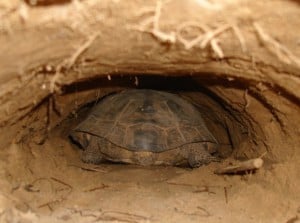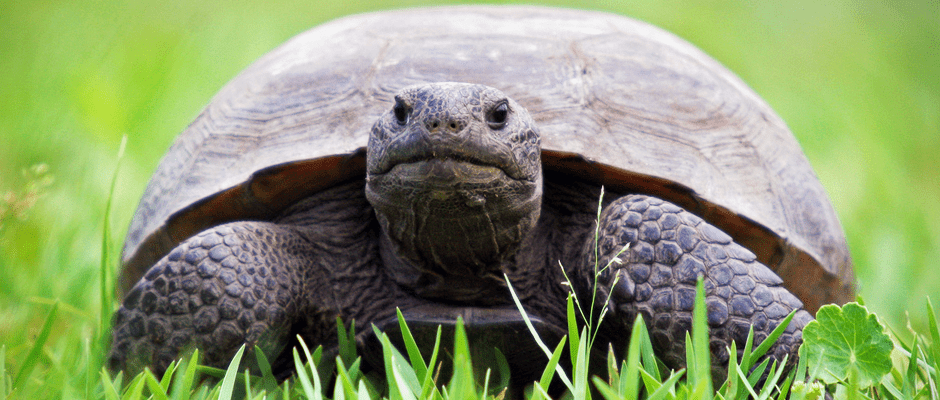Share this article
Gopher tortoises relocated to Air Force base in Florida
Over the coming year, at least 500 gopher tortoises (Gopherus polyphemus) will be moved from a construction area in south Florida to Eglin Air Force Base in the northwest part of the state.
The only tortoise in the eastern United States, the burrow-digging gopher tortoise has experienced significant population declines largely due to loss of suitable habitat. The species is listed as threatened under Florida state law, and is a candidate for Endangered Species Act listing as threatened in Florida, Georgia, and South Carolina. Populations in Alabama, Mississippi, and Louisiana are already listed as threatened under the ESA.

A gopher tortoise makes its way into a burrow. ©FWC Fish and Wildlife Research Institute
Historically, the 464,000-acre military base has been home to very few tortoises despite its 280,000 acres of suitable habitat. Now, partnering with the U.S. Fish and Wildlife Service and the Florida Fish and Wildlife Conservation Commission, Eglin AFB wildlife managers hope to play a major role in recovering the species.
The tortoises are being moved out of south Florida and off land that is scheduled for development. Current Florida regulations require developers to move tortoises that may be affected by construction, but the land in question was approved for development prior to those regulations taking effect; thus developers could legally begin construction without relocating those tortoises.
The first relocation of approximately 250 tortoises arrived on Oct. 26 and was placed on a fenced, 100-acre area in a western portion of the base. The fences are intended to prevent predation and keep the tortoises from wandering too far before establishing themselves in the new burrows. A similar habitat area will be constructed for the next 250 tortoises, scheduled to arrive in the near future.
Wayne Pittman, a biology technician in the Eglin AFB Natural Resources Office, describes the relocation effort as beneficial to each entity involved.
“It benefits the tortoises, obviously, because they’re getting a new, much nicer place to live,” he said, as quoted by NWF Daily News. “It benefits our longleaf pine ecosystem because gopher tortoises are what’s known as a keystone species. Their burrows will house over 300 different species, including threatened species like the Eastern Indigo snake. They’re an essential component of any good natural resources management plan.”
Conserving the gopher tortoise also benefits Eglin AFB operations: increasing population numbers decreases the species’ need for federal regulations that could ultimately restrict base activities and land use.
Eglin’s wildlife chief Justin Johnson considers this an opportunity to encourage other southeastern military installations to conserve gopher tortoises.
“This is a lot bigger than Eglin Air Force Base,” he said in an E&E article. “The work we are doing here will impact other Department of Defense installations and other gopher tortoise conservation areas.”
Eglin AFB is no newcomer to wildlife conservation. Thanks to collaborative efforts and changes in land management, the base is home to the fourth largest red-cockaded woodpecker (Picoides borealis) population in the country. Eglin AFB also worked closely with USFWS to protect and improve habitat for the Okaloosa darter (Etheostoma okaloosae), resulting in the the fish’s downlisting in 2010 from endangered to threatened.
Header Image: ©Craig O’Neal








